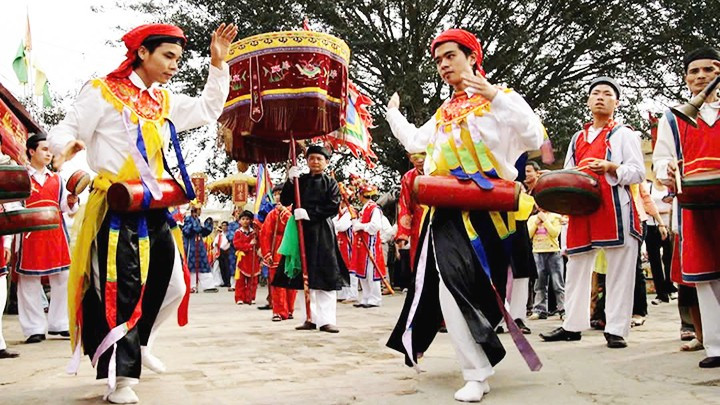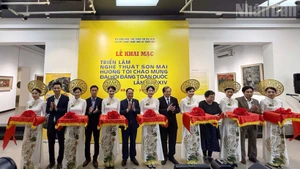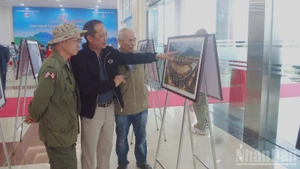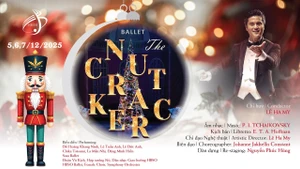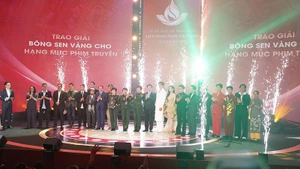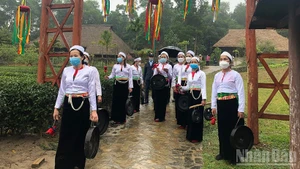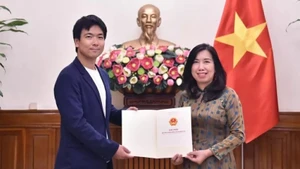Q: You were born and raised in the heart of Hanoi. What has left a particularly strong impression on you?
A: Awaiting spring and immersing myself in its rhythm always leaves a profound impression on me. During the Lunar New Year Festival, the streets of Hanoi seem to don a new garment, a vibrant and colourful coat. Streets such as Hang Thiec, Hang Bo, and Hang Ma become bustling and lively with their unique offerings. In particular, traditional items like slippers, horse figurines, and decorative New Year ornaments embody the rich traditions and essence of the capital city. The Lunar New Year Festival is also a time when we can feel the harmony between tradition and modernity, captured in every street corner and every photograph.
Q: When did you begin your journey with photography, and why did you choose this path to capture the special moments of festivals — a subject you are passionate about pursuing?
A: I began my journey with photography quite early. It was not until my third year at university that I started capturing satisfying shots, using techniques like long exposure and selecting ideal spots to photograph fireworks on New Year’s Eve.
I have visited numerous festivals, from renowned celebrations to smaller village festivities. One of the most memorable experiences for me was the Dong Ky Firecracker Procession Festival in Bac Ninh, which showcased many unique cultural aspects that I captured through photos rich in shapes and colours.
The feeling of witnessing the transformation of craft villages welcoming spring is unforgettable. From Tranh Khuc Village making banh chung (square glutinous rice cake) in Thanh Tri (Hanoi) to villages like Tuan Di in Hung Yen, which is known for cultivating 'dong' leaves, all these places exude a rustic charm, deeply rooted in tradition. They embody the daily nurturance of life’s rhythms, especially the vibrant pulse of spring.
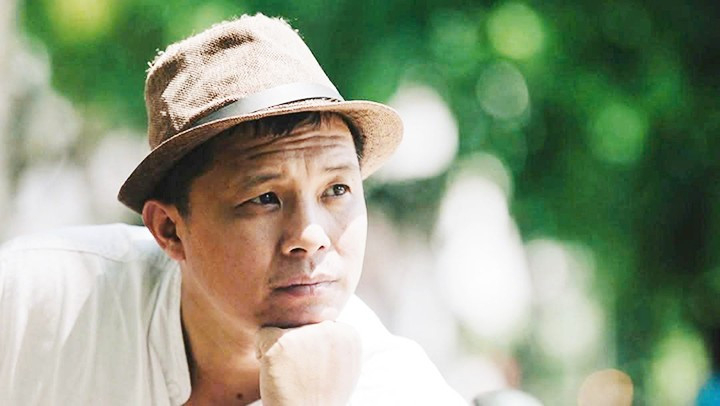 |
| Photographer Le Bich |
Q: From the festivals you have attended, what highlight has left the strongest impression on you?
A: Each festival has its own unique beauty and story. For example, I have captured the moments from the traditional festival of Trieu Khuc Village (Thanh Tri District) since 2005, when very few people were documenting it. This festival is remarkable for its four ancient dances. These dances involve the community and preserve traditional cultural values.
The mua bong (one of traditional dances of Trieu Khuc villagers), safeguarded by artisan Trieu Dinh Hong, has been captured in my deeply moving photographs. Notably, the growth of the dance troupe from four to 26 members is a vivid testament to the enduring vitality of national culture.
I also find distinctive elements at other festivals, such as those in Da Trach (Hung Yen Province) or Cao Dinh Village. However, Trieu Khuc remains a place I wish to return to time and again; I feel as if it has become my second home.
Q: In your photo series, you also show a particular interest in capturing moments leading up to festivals. Why did you choose this perspective?
A: One of my most memorable experiences was photographing the ball wrestling festival in Thuy Linh Village (Hoang Mai, Hanoi), which showcases the spirit of martial valour and, more importantly, the will and respect to ancestors. Before the main festival begins, the young men in the village perform rituals of offering sacrifices. Offerings are made, and the ball is carefully prepared to be presented to the deities, honouring the deceased. I believe the preparations before the festival are sacred. The people who participate do so not only because it is part of the festival, but because from deep within their hearts, they believe in their faith and want to dedicate in the most meticulous and respectful manner possible. Therefore, these photographs, aside from capturing beautiful moments, are my way of telling the story of the community, their beliefs, and their respect for tradition.
Q: Over the years of working in photography, what has been the most meaningful aspect of your work?
A: The most meaningful aspect of my work is when people understand and feel the stories behind the photos I take. Often, I do not shoot just to create a beautiful image, but to convey an emotional story deeply rooted in cultural values. Sometimes, a simple photo can hold an entire treasure of history. And when I see people looking at these works and grasping their significance, I feel that my efforts have been truly rewarded.
Thank you very much!
Photographer Le Bich: "It is not just at large-scale events that I remember special moments. One of the most memorable for me was when I photographed the New Year's Eve offering ritual performed by street cleaners on the sidewalks in the heart of Hanoi. In that moment, I felt the simplicity yet profound reverence of the act. In that sacred moment, they created a space just for themselves, for their work, as a means to express gratitude and wish for all things good in the coming year."
